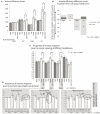Islamic Headdress Influences How Emotion is Recognized from the Eyes
- PMID: 22557983
- PMCID: PMC3322610
- DOI: 10.3389/fpsyg.2012.00110
Islamic Headdress Influences How Emotion is Recognized from the Eyes
Abstract
Previous research has shown a negative bias in the perception of whole facial expressions from out-group members. Whether or not emotion recognition from the eyes is already sensitive to contextual information is presently a matter of debate. In three experiments we tested whether emotions can be recognized when just the eyes are visible and whether this recognition is affected by context cues, such as various Islamic headdresses vs. a cap or a scarf. Our results indicate that fear is still well recognized from a briefly flashed (100 ms) image of a women wearing a burqa with less than 20% transparency of the eye region. Moreover, the type of headdress influences how emotions are recognized. In a group of participants from non-Islamic background, fear was recognized better from women wearing a niqāb than from women wearing a cap and a shawl, whereas the opposite was observed for happy and sad expressions. The response patterns showed that fearful and anger labels were more often attributed to women with a niqāb vs. a cap and a shawl and again, an opposite pattern was observed for the happy response. However, there was no general response bias: both correct and incorrect responses were influenced by the facial expression as well. Anxiety levels and/or explicit negative associations with the Islam as measured via questionnaires did not mediate the effects. Consistent with the face literature, we conclude that the recognition of emotions from the eyes is also influenced by context.
Keywords: attitudes; context; emotion; face parts; out-group.
Figures





References
LinkOut - more resources
Full Text Sources
Miscellaneous

